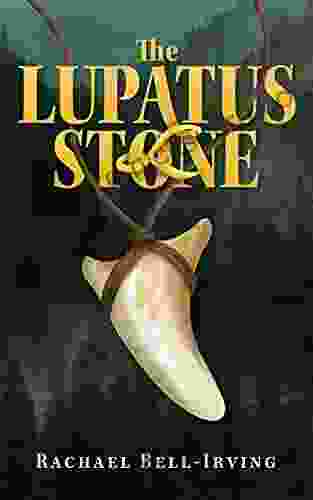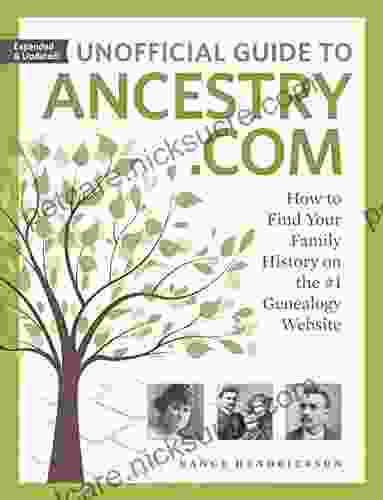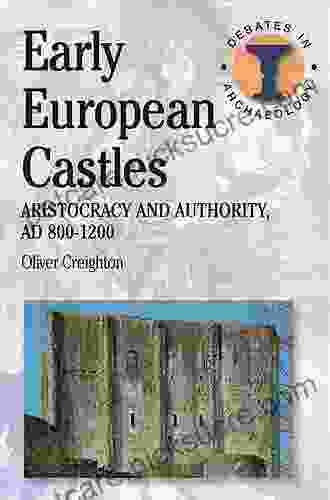Aristocracy and Authority in Europe AD 800-1200: Unveiling the Dynamics of Power through Archaeological Excavations

The period between AD 800 and 1200 witnessed a profound transformation in European society, marked by the rise of powerful aristocracies and the emergence of centralized authority. Archaeological excavations have played a crucial role in shedding light on this pivotal era, providing valuable insights into the nature and exercise of aristocratic power. This article delves into the ongoing debates within archaeology surrounding the role of aristocracy and authority in shaping the political, social, and economic landscapes of Europe during this period.
The Rise of Aristocracies: Archaeological Evidence
Archaeological excavations have revealed physical manifestations of aristocratic privilege and power, such as fortified residences, elaborate burials, and prestigious artifacts. These material remains indicate that aristocracies, often composed of noble lineages, emerged as a dominant force in many regions of Europe. They commanded loyalty and wielded considerable authority over their local communities.
4.5 out of 5
| Language | : | English |
| File size | : | 21989 KB |
| Text-to-Speech | : | Enabled |
| Screen Reader | : | Supported |
| Enhanced typesetting | : | Enabled |
| Print length | : | 170 pages |
Fortified Residences: Castles and Manors
Castles and manor houses served as both defensive structures and symbols of aristocratic authority. Excavations have unearthed substantial fortifications, such as moats, ramparts, and towers, surrounding these residences. These architectural features provided protection against rivals and potential threats. The presence of luxurious interiors, adorned with expensive furnishings and elaborate wall paintings, further underscores the status and wealth of aristocratic households.
Elite Burials: Graves and Tombs
Archaeological excavations have uncovered elaborate burials attributed to aristocratic individuals. These graves often contain rich grave goods, including jewelry, weapons, and precious objects, reflecting the wealth and prestige of the deceased. Some burials, particularly those of high-ranking nobles, feature monumental tombs or mausoleums, further emphasizing the importance of lineage and ancestry within aristocratic society.
Prestigious Artifacts: Symbols of Power
The possession of prestigious artifacts, such as imported pottery, fine jewelry, and exotic goods, served as visible markers of aristocratic status. Excavated assemblages have yielded an array of these items, suggesting that aristocracies actively sought to display their wealth and connections through material culture.
The Exercise of Authority: Archaeological Perspectives
Beyond the physical manifestations of aristocratic power, archaeology has also illuminated the diverse ways in which authority was exercised and legitimized during this period. Excavations have uncovered evidence of administrative centers, judicial proceedings, and symbolic practices that shed light on the mechanisms of aristocratic rule.
Administrative Centers: Palaces and Courts
Archaeological investigations have revealed the existence of administrative centers, such as palaces and courts, where aristocratic elites conducted their affairs. These complexes often featured specialized buildings for administrative functions, storage facilities, and residential quarters for officials. The presence of these centers suggests that aristocracies established bureaucratic systems to manage their territories and maintain control over their subjects.
Judicial Proceedings: Halls and Courts
Excavations have also uncovered evidence of judicial proceedings within aristocratic societies. Halls or courts served as venues for resolving disputes, administering justice, and enforcing laws. The presence of benches, witness stands, and other architectural features associated with judicial processes provides insights into the mechanisms of aristocratic authority and the role of law in maintaining social order.
Symbolic Practices: Rituals and Ceremonies
Archaeological evidence has revealed the importance of symbolic practices in legitimizing aristocratic authority. Excavations have uncovered traces of rituals and ceremonies associated with the inauguration of rulers, the celebration of victories, and the commemoration of ancestors. These practices served to reinforce the divine or hereditary basis of aristocratic power and create a sense of legitimacy and consensus within society.
Debates in Archaeology: Contesting Perspectives
The archaeological study of aristocracy and authority during this period has been marked by ongoing debates and contrasting interpretations. Scholars have engaged in lively discussions regarding the nature of aristocratic power, its relationship with other social groups, and the processes of state formation.
Centralized versus Local Authority
One of the key debates centers on the nature of aristocratic authority. Some scholars argue that aristocracies exercised centralized power over large territories, establishing hierarchical political systems. Others emphasize the decentralized nature of aristocratic rule, suggesting that aristocrats' authority was primarily local and fragmented. Archaeological evidence has been used to support both sides of this argument.
Aristocracy and Kinship
Another area of debate concerns the role of kinship and lineage within aristocratic societies. Some scholars view aristocracies as primarily based on kinship ties and hereditary succession. Others argue that non-familial factors, such as wealth, military prowess, or political alliances, also played significant roles in determining aristocratic status and authority. Archaeological evidence, including the study of burials and settlement patterns, provides valuable insights into the social dynamics and kinship structures within aristocratic communities.
State Formation and Aristocratic Power
The debate surrounding state formation in Europe during this period is closely intertwined with the study of aristocracy and authority. Some scholars see aristocracies as key agents in the emergence of centralized states, while others view them as obstacles to state formation. Archaeological evidence, such as the establishment of administrative centers and the standardization of coinage, offers important clues for understanding the relationship between aristocracy and the development of state structures.
The study of aristocracy and authority in Europe between AD 800 and 1200 through archaeological excavations has yielded a wealth of knowledge about the political, social, and economic dynamics of this period. Archaeological evidence has provided insights into the rise of powerful aristocracies, the exercise of authority, and the complex debates surrounding the nature of aristocratic power. While contrasting perspectives continue to shape the field, archaeological research remains a vital tool for unraveling the intricacies of aristocratic societies and their enduring legacies.
4.5 out of 5
| Language | : | English |
| File size | : | 21989 KB |
| Text-to-Speech | : | Enabled |
| Screen Reader | : | Supported |
| Enhanced typesetting | : | Enabled |
| Print length | : | 170 pages |
Do you want to contribute by writing guest posts on this blog?
Please contact us and send us a resume of previous articles that you have written.
 Fiction
Fiction Non Fiction
Non Fiction Romance
Romance Mystery
Mystery Thriller
Thriller SciFi
SciFi Fantasy
Fantasy Horror
Horror Biography
Biography Selfhelp
Selfhelp Business
Business History
History Classics
Classics Poetry
Poetry Childrens
Childrens Young Adult
Young Adult Educational
Educational Cooking
Cooking Travel
Travel Lifestyle
Lifestyle Spirituality
Spirituality Health
Health Fitness
Fitness Technology
Technology Science
Science Arts
Arts Crafts
Crafts DIY
DIY Gardening
Gardening Petcare
Petcare Christa Mackinnon
Christa Mackinnon Phyllis Franklin
Phyllis Franklin Lawrence T Friedhoff
Lawrence T Friedhoff Maureen Dempsey
Maureen Dempsey Ejike Ifeanyichukwu
Ejike Ifeanyichukwu Janet Malcolm
Janet Malcolm Mae Ilami Onyekwum
Mae Ilami Onyekwum Erfun Geula
Erfun Geula Helen Batten
Helen Batten Matthew Harffy
Matthew Harffy Adam Rutherford Phd
Adam Rutherford Phd John Small
John Small Ben Coates
Ben Coates Ann Olga Koloski Ostrow
Ann Olga Koloski Ostrow Sean Fitz Gerald
Sean Fitz Gerald Alison Gopnik
Alison Gopnik Jeff Benedict
Jeff Benedict Stacey Steinberg
Stacey Steinberg Samantha Boardman
Samantha Boardman Robert Lomas
Robert Lomas Sharon Wilkins
Sharon Wilkins S K Gupta
S K Gupta Leonie Mack
Leonie Mack Spire Study System
Spire Study System Nancy Hendrickson
Nancy Hendrickson Erin Miller
Erin Miller Sarah A Clark
Sarah A Clark Karen Kovacs
Karen Kovacs Alexandra Kenin
Alexandra Kenin Timothy Dickeson
Timothy Dickeson Dierdre Wolownick Honnold
Dierdre Wolownick Honnold Doug Degrood
Doug Degrood Tyler Lansford
Tyler Lansford Peter Hessler
Peter Hessler Lech A Grzelak
Lech A Grzelak Julia Rutland
Julia Rutland Robyn Perry Worthington
Robyn Perry Worthington Harold Simmons
Harold Simmons Botros Rizk
Botros Rizk Robin Hobb
Robin Hobb Matthew Dworak
Matthew Dworak Zachary Willey
Zachary Willey Michael R Canfield
Michael R Canfield Paul Annacone
Paul Annacone Emily Chetkowski
Emily Chetkowski Rebekah Dodson
Rebekah Dodson Amanda Claridge
Amanda Claridge Loudell F Snow
Loudell F Snow Anthony Burgess
Anthony Burgess Ivor Horton
Ivor Horton Tim Deroche
Tim Deroche Michael T Mcdermott
Michael T Mcdermott Linda L French
Linda L French Ronald York
Ronald York Nancy B Rapoport
Nancy B Rapoport John Vigor
John Vigor Edward Marston
Edward Marston Karl Rehn
Karl Rehn Ric Conrad
Ric Conrad Joseph Mercola
Joseph Mercola Geoff Powter
Geoff Powter Rana Conway
Rana Conway Sandra Uwiringiyimana
Sandra Uwiringiyimana Michelle Damiani
Michelle Damiani Robyn Hawkins
Robyn Hawkins Robert Clifton Robinson
Robert Clifton Robinson Ukay J Ekong
Ukay J Ekong Mark Lattanzi
Mark Lattanzi Diane H Tracey
Diane H Tracey Charlotte Eliopoulos
Charlotte Eliopoulos Paul Johnson
Paul Johnson Darril Fosty
Darril Fosty Ashlee Kasten
Ashlee Kasten Robyn Ryle
Robyn Ryle Alexandra Witze
Alexandra Witze 1st Ed 2020 Edition Kindle Edition
1st Ed 2020 Edition Kindle Edition Sally A Lipsky
Sally A Lipsky Nick Redfern
Nick Redfern 1st Ed 2019 Edition Kindle Edition
1st Ed 2019 Edition Kindle Edition Christine E Sleeter
Christine E Sleeter Geoff Johns
Geoff Johns Jack Newfield
Jack Newfield Julie K Briggs
Julie K Briggs Julie Angus
Julie Angus Dk Publishing
Dk Publishing Derald Wing Sue
Derald Wing Sue S Elia
S Elia Barry Ord Clarke
Barry Ord Clarke Natsuki Takaya
Natsuki Takaya Bradmd
Bradmd Michael Ross
Michael Ross Adeline Yen Mah
Adeline Yen Mah Nathan D Lang Raad
Nathan D Lang Raad Michael Borenstein
Michael Borenstein Samuel Owedyk
Samuel Owedyk Anton Angelov
Anton Angelov Stephen Bodio
Stephen Bodio Eric Sevareid
Eric Sevareid Kiley Reid
Kiley Reid Vaclav Smil
Vaclav Smil Jacob Stegenga
Jacob Stegenga Susan Alcorn
Susan Alcorn Kim Dwinell
Kim Dwinell Deborah T Goldberg
Deborah T Goldberg Elizabeth Heavey
Elizabeth Heavey Helen Garabedian
Helen Garabedian Timothy R Pauketat
Timothy R Pauketat H Lee Jones
H Lee Jones David Barrett
David Barrett Felicity Cloake
Felicity Cloake Daniel L Schacter
Daniel L Schacter Lani Forbes
Lani Forbes Gary Dierking
Gary Dierking Jeremy Bhandari
Jeremy Bhandari Ben Rothenberg
Ben Rothenberg Nick Morrison
Nick Morrison Raven Morgaine
Raven Morgaine Editions La Plume D Eros
Editions La Plume D Eros 6th Edition Kindle Edition
6th Edition Kindle Edition Louise Warneford
Louise Warneford Perre Coleman Magness
Perre Coleman Magness Janice K Ledford
Janice K Ledford Rachel Reed
Rachel Reed Derek Rowntree
Derek Rowntree Jeremy Lent
Jeremy Lent Bill Rodgers
Bill Rodgers Lh Press
Lh Press Ian Sample
Ian Sample Patricia G Lange
Patricia G Lange Gary E Schwartz
Gary E Schwartz Joachim Rossberg
Joachim Rossberg Desiree Trattles
Desiree Trattles Tim Hollister
Tim Hollister Bilingual Edition Kindle Edition
Bilingual Edition Kindle Edition Didier Reiss
Didier Reiss Christopher Carter
Christopher Carter Isa Herrera
Isa Herrera Anne Polli
Anne Polli Livy
Livy Andy Kirkpatrick
Andy Kirkpatrick Forrest Willett
Forrest Willett Raymond Arsenault
Raymond Arsenault R I Chalmers
R I Chalmers Tim Powers
Tim Powers Steve Garratt
Steve Garratt J F Tamayo
J F Tamayo Ashley Stanford
Ashley Stanford Mike Bender
Mike Bender David Kahn
David Kahn Anthony Haynes
Anthony Haynes Mike Chappell
Mike Chappell Taran Matharu
Taran Matharu 1st Ed 2017 Edition Kindle Edition
1st Ed 2017 Edition Kindle Edition Laura Luther
Laura Luther Christopher Hook
Christopher Hook Elizabeth Becker
Elizabeth Becker Dylan Dethier
Dylan Dethier Janet Godwin
Janet Godwin Amanda Brooks
Amanda Brooks My Daily German
My Daily German Michael Schiavone
Michael Schiavone Jean Pierre De Caussade
Jean Pierre De Caussade Andrew Solomon
Andrew Solomon Pat Manley
Pat Manley Elise Hennessy
Elise Hennessy Kaoru Sinozaki
Kaoru Sinozaki Arden Rose
Arden Rose Karen L Cox
Karen L Cox M L Buchman
M L Buchman Brent E Turvey
Brent E Turvey Robert Chu
Robert Chu Naomi Moriyama
Naomi Moriyama Brian Meier
Brian Meier 1st Edition Kindle Edition
1st Edition Kindle Edition Jean Yves Leloup
Jean Yves Leloup Clark A Campbell
Clark A Campbell Evy Poumpouras
Evy Poumpouras Jeffrey S Saltz
Jeffrey S Saltz Mayim Bialik
Mayim Bialik Peter Burns
Peter Burns Jon Young
Jon Young Kathy Farrokhzad
Kathy Farrokhzad Nicholas J Saunders
Nicholas J Saunders Kim Mack Rosenberg
Kim Mack Rosenberg Liz Thomas
Liz Thomas Jason Sumner
Jason Sumner Lynne Tolley
Lynne Tolley Charles Fleming
Charles Fleming Robert Milner
Robert Milner Jesse M Ehrenfeld
Jesse M Ehrenfeld Leslie Anthony
Leslie Anthony Hafsah Faizal
Hafsah Faizal Norman Delgado
Norman Delgado Janice Hudson
Janice Hudson The Lodge Company
The Lodge Company Six Sisters Stuff
Six Sisters Stuff Leona S Aiken
Leona S Aiken Jamil Zaki
Jamil Zaki Otto Toeplitz
Otto Toeplitz Harvey Penick
Harvey Penick Paul Gaskell
Paul Gaskell Jerome Rand
Jerome Rand Denis Dwyer
Denis Dwyer Andrea Olson
Andrea Olson Paul Freedman
Paul Freedman Joyce L Vedral
Joyce L Vedral Christian Straube
Christian Straube Terry Pratchett
Terry Pratchett Teri Tom
Teri Tom Mark Vee John
Mark Vee John Rollo Tomassi
Rollo Tomassi Ruth Ware
Ruth Ware Neil Sagebiel
Neil Sagebiel Dorthe Berntsen
Dorthe Berntsen David Roberts
David Roberts Rafael Nadal
Rafael Nadal Ian Stewart
Ian Stewart Alan Greenfield
Alan Greenfield Peter Heller
Peter Heller Richard E Nisbett
Richard E Nisbett Alison Pray
Alison Pray Florence Nightingale
Florence Nightingale Mark Santino
Mark Santino Jacob Cohen
Jacob Cohen Scott Matthews
Scott Matthews Mindfulness Hypnosis Academy
Mindfulness Hypnosis Academy Tillie Cole
Tillie Cole Lindsey Bliss
Lindsey Bliss Aron Ralston
Aron Ralston Sanjay Sarma
Sanjay Sarma Shalini Shankar
Shalini Shankar Bob Allcorn
Bob Allcorn Stephen R Lawhead
Stephen R Lawhead Jamie Dorobek
Jamie Dorobek Ivana Bajic Hajdukovic
Ivana Bajic Hajdukovic Lars Anderson
Lars Anderson Paul Haddad
Paul Haddad Evelyn Raab
Evelyn Raab Sophie Kinsella
Sophie Kinsella Gail Buckland
Gail Buckland M Susan Lindee
M Susan Lindee John T Cacioppo
John T Cacioppo James Ragonnet
James Ragonnet Seth Tucker
Seth Tucker Carol Lynn Mckibben
Carol Lynn Mckibben Diane Vaughan
Diane Vaughan Christian Fader
Christian Fader Sarah A Reinhard
Sarah A Reinhard Claire Dunn
Claire Dunn Tom Chivers
Tom Chivers Franz Boas
Franz Boas Gill Stewart
Gill Stewart 1st Ed 2018 Edition Kindle Edition
1st Ed 2018 Edition Kindle Edition Jane Yeadon
Jane Yeadon Sarah Thompson
Sarah Thompson Jamie Whyte
Jamie Whyte Sara Snow
Sara Snow George Mount
George Mount Bill Douglas
Bill Douglas Phil Mickelson
Phil Mickelson Irene Spencer
Irene Spencer Brad Myers
Brad Myers Nicole Libin Phd
Nicole Libin Phd Bruce Brown
Bruce Brown Alan Naldrett
Alan Naldrett Rosemary Ellen Guiley
Rosemary Ellen Guiley Kristen Thrasher
Kristen Thrasher Daniel H Pink
Daniel H Pink Asti Hustvedt
Asti Hustvedt Day Schildkret
Day Schildkret Nageshwar Sah
Nageshwar Sah Shane Jones
Shane Jones Taylor Fontenot
Taylor Fontenot Manjit Kumar
Manjit Kumar Estelle Maskame
Estelle Maskame Mike Lanza
Mike Lanza Jeanne Oliver
Jeanne Oliver Knowledge Tree
Knowledge Tree Gerd Gigerenzer
Gerd Gigerenzer Emily Vikre
Emily Vikre Burt L Standish
Burt L Standish Thomas Lickona
Thomas Lickona Wabun Wind
Wabun Wind Os Guinness
Os Guinness Raichelle Carter
Raichelle Carter Joanne Calderwood
Joanne Calderwood Mark Seidenberg
Mark Seidenberg Brian Fagan
Brian Fagan Philip Coppens
Philip Coppens John Toussaint
John Toussaint Lenora Chu
Lenora Chu Aaron T Beck
Aaron T Beck Broccoli Lion
Broccoli Lion Ray Mcnulty
Ray Mcnulty Webb Chiles
Webb Chiles Amanda Kingloff
Amanda Kingloff Egerton Ryerson Young
Egerton Ryerson Young Dr Mike Grevlos
Dr Mike Grevlos Keshia A Case
Keshia A Case David Weber
David Weber Carmen Acevedo Butcher
Carmen Acevedo Butcher Xiufeng Liu
Xiufeng Liu Ewan Mcgregor
Ewan Mcgregor Kathleen Buckstaff
Kathleen Buckstaff Wolfgang Jank
Wolfgang Jank Russ Moorhouse
Russ Moorhouse Intelligent
Intelligent Paul A Laviolette
Paul A Laviolette Bob Chandler
Bob Chandler James Adams
James Adams Robert Oerter
Robert Oerter Dan Robson
Dan Robson Leonard Sax
Leonard Sax Belinia Xenrale
Belinia Xenrale Elizabeth Field
Elizabeth Field David Fine
David Fine Adam Cesare
Adam Cesare Larry Krieger
Larry Krieger Dana Trentini
Dana Trentini Gerald Beaudry
Gerald Beaudry Latham Thomas
Latham Thomas Nicole Zasowski
Nicole Zasowski Pam Vredevelt
Pam Vredevelt Lori Bregman
Lori Bregman Karyn Garvin
Karyn Garvin Clifford E Trafzer
Clifford E Trafzer Keith Bowden
Keith Bowden Chip Ingram
Chip Ingram Wendy Higgins
Wendy Higgins Kay Kennedy
Kay Kennedy Ali Psiuk
Ali Psiuk Francis L Macrina
Francis L Macrina Richard Hofstadter
Richard Hofstadter John L Havlin
John L Havlin Fern Nichols
Fern Nichols Tadahiko Mizuno
Tadahiko Mizuno Michael Clarke
Michael Clarke James Proctor
James Proctor Guillermo Gonzalez
Guillermo Gonzalez Joshua James
Joshua James Jill Heinerth
Jill Heinerth Kajal Gupta
Kajal Gupta Chris J Ellis
Chris J Ellis Monica Beyer
Monica Beyer Sharon Copeland
Sharon Copeland Pete Magill
Pete Magill Marisa Kanter
Marisa Kanter Jareth Tempest
Jareth Tempest Morten H Christiansen
Morten H Christiansen David Clark
David Clark Daisaku Ikeda
Daisaku Ikeda Alan Agresti
Alan Agresti Arny Alberts
Arny Alberts Alexandre Paiva
Alexandre Paiva Andrew Evans
Andrew Evans Kyler Shumway
Kyler Shumway Modestus Anabaraonye
Modestus Anabaraonye 1st Ed 2016 Edition Kindle Edition
1st Ed 2016 Edition Kindle Edition Peter Lightbown
Peter Lightbown Laura Prepon
Laura Prepon Larry Kaniut
Larry Kaniut Sarah Lawton
Sarah Lawton Beryl Beare
Beryl Beare Jonathan Vaughters
Jonathan Vaughters Saroo Brierley
Saroo Brierley Geraint Thomas
Geraint Thomas Roger Frampton
Roger Frampton Kev Reynolds
Kev Reynolds Jacqueline Carey
Jacqueline Carey R J Vickers
R J Vickers Valerie Nash Chang
Valerie Nash Chang Ann Jackson
Ann Jackson Yaron Seidman
Yaron Seidman Jandy Nelson
Jandy Nelson Rick Barba
Rick Barba Carola Hein
Carola Hein Harry Fisch
Harry Fisch Vikas Bhushan
Vikas Bhushan Mildred Council
Mildred Council Launi Meili
Launi Meili 15th Edition Kindle Edition
15th Edition Kindle Edition Irina Szmelskyj
Irina Szmelskyj Cathy Raubenheimer
Cathy Raubenheimer Lisa Marasco
Lisa Marasco Susan Ludington Hoe
Susan Ludington Hoe Heather A Smith
Heather A Smith Michele Smith
Michele Smith Natalia Molina
Natalia Molina Lou Nanne
Lou Nanne Frank Wilczek
Frank Wilczek Chad Waterbury
Chad Waterbury Dinah Bucholz
Dinah Bucholz Mike Barrett
Mike Barrett Philippa Langley
Philippa Langley Steve Crawford
Steve Crawford Chris Stringer
Chris Stringer Felicia Pizzonia
Felicia Pizzonia Pam Jarvis
Pam Jarvis Berkshire K Greene
Berkshire K Greene Wendy Sullivan
Wendy Sullivan Hana Ali
Hana Ali Jim Baggott
Jim Baggott Monte Burch
Monte Burch Maia Motley
Maia Motley Teddy Atlas
Teddy Atlas Robert Irwin
Robert Irwin Eryk Lewinson
Eryk Lewinson Glenda Green
Glenda Green Sara Saedi
Sara Saedi Grace Liu
Grace Liu Edward A Bell
Edward A Bell Mark Miller
Mark Miller Holly Hook
Holly Hook Hannu Rajaniemi
Hannu Rajaniemi David I Spivak
David I Spivak Richard Pears
Richard Pears Rebecca Solnit
Rebecca Solnit Joshua G Shifrin
Joshua G Shifrin Carol Matsuzaki
Carol Matsuzaki James M Tabor
James M Tabor Cal Peternell
Cal Peternell Lei Wang
Lei Wang Jay Cassell
Jay Cassell Travis Senzaki
Travis Senzaki John S Farnam
John S Farnam George Grimm
George Grimm T M Mikita
T M Mikita Bud Hasert
Bud Hasert Joan Ryan
Joan Ryan Randall M Packard
Randall M Packard D James Benton
D James Benton Tamonya Sands
Tamonya Sands David Wolff
David Wolff Alice Roberts
Alice Roberts Bryn Huntpalmer
Bryn Huntpalmer Ellie Marney
Ellie Marney Deborah Spungen
Deborah Spungen Diana Papaioannou
Diana Papaioannou Craig Clapper
Craig Clapper Daniel Todd Gilbert
Daniel Todd Gilbert Mambo Chita Tann
Mambo Chita Tann Ron Larson
Ron Larson Matthew B Crawford
Matthew B Crawford Michael Archer
Michael Archer Orji Onyebuchi
Orji Onyebuchi Stanley Vast
Stanley Vast Katie Singer
Katie Singer Gary M Schultheis
Gary M Schultheis Megan Sloan
Megan Sloan Elaine Heney
Elaine Heney Suzy Hopkins
Suzy Hopkins William E Glassley
William E Glassley Andrea Sfiligoi
Andrea Sfiligoi Lavinia Collins
Lavinia Collins 1st Ed 2021 Edition Kindle Edition
1st Ed 2021 Edition Kindle Edition Bruce Chatwin
Bruce Chatwin Patricia B Mcconnell
Patricia B Mcconnell David Faulkner
David Faulkner Larry A Yff
Larry A Yff Lisa R Cohen
Lisa R Cohen Amita Jassi
Amita Jassi Jody Morse
Jody Morse Jo Bartlett
Jo Bartlett Jacob Gardner
Jacob Gardner Hesam Nemounehkhah
Hesam Nemounehkhah Cathy Hester Seckman
Cathy Hester Seckman Stephen C Meyer
Stephen C Meyer Kara Goucher
Kara Goucher Graham Priest
Graham Priest House Of Talent
House Of Talent Philip Moore
Philip Moore Disha Experts
Disha Experts Marva Collins
Marva Collins Judith Warner
Judith Warner Jonathan Tarbox
Jonathan Tarbox Fletcher Dunn
Fletcher Dunn Will Nett
Will Nett Joshua Darwin
Joshua Darwin Piotr Naskrecki
Piotr Naskrecki R K Agarwal
R K Agarwal Skylar Kergil
Skylar Kergil Caroline Fidanza
Caroline Fidanza Alice Waters
Alice Waters Shane Benzie
Shane Benzie Rachael Bell Irving
Rachael Bell Irving Mary Douglas
Mary Douglas Alex Hibbert
Alex Hibbert Traci Chee
Traci Chee Jay Carter
Jay Carter Karina Manta
Karina Manta Mara Rutherford
Mara Rutherford Duncan Hamilton
Duncan Hamilton Chris Parsons
Chris Parsons Brent Warner
Brent Warner Jacqueline Corricelli
Jacqueline Corricelli Daniel Scott
Daniel Scott Robert Lanza
Robert Lanza Guy Harrison
Guy Harrison
Light bulbAdvertise smarter! Our strategic ad space ensures maximum exposure. Reserve your spot today!

 Walt WhitmanDive into the World Firearms Reference: A Comprehensive Guide to the History,...
Walt WhitmanDive into the World Firearms Reference: A Comprehensive Guide to the History,... Roald DahlFollow ·3.1k
Roald DahlFollow ·3.1k Mario SimmonsFollow ·9k
Mario SimmonsFollow ·9k Jared NelsonFollow ·6.7k
Jared NelsonFollow ·6.7k Charles BukowskiFollow ·3.6k
Charles BukowskiFollow ·3.6k Dylan HayesFollow ·12.3k
Dylan HayesFollow ·12.3k Philip BellFollow ·14k
Philip BellFollow ·14k Oliver FosterFollow ·15.3k
Oliver FosterFollow ·15.3k Richard WrightFollow ·8.2k
Richard WrightFollow ·8.2k

 Marcus Bell
Marcus BellThe Essential Guide to Angler Quick Reference: Your...
Embark on an unforgettable...

 Juan Butler
Juan ButlerThe Lupatus Stone: A Wicked Conjuring
The Lupatus Stone is a...

 Alvin Bell
Alvin BellUnveiling the Enchanting Memoirs of Lady Hyegyong: A...
In the annals of Korean...

 DeShawn Powell
DeShawn PowellAMC's Best Day Hikes in the Berkshires: Explore Majestic...
The Berkshires, a...

 Clark Campbell
Clark CampbellRewilding The Urban Soul: Reconnecting with Nature in the...
In the heart of sprawling metropolises, where...

 Cruz Simmons
Cruz SimmonsHow to Find Your Family History on a Genealogy Website: A...
Delving into the...
4.5 out of 5
| Language | : | English |
| File size | : | 21989 KB |
| Text-to-Speech | : | Enabled |
| Screen Reader | : | Supported |
| Enhanced typesetting | : | Enabled |
| Print length | : | 170 pages |










